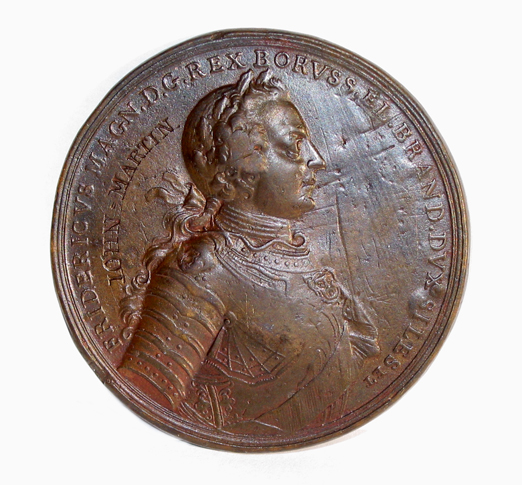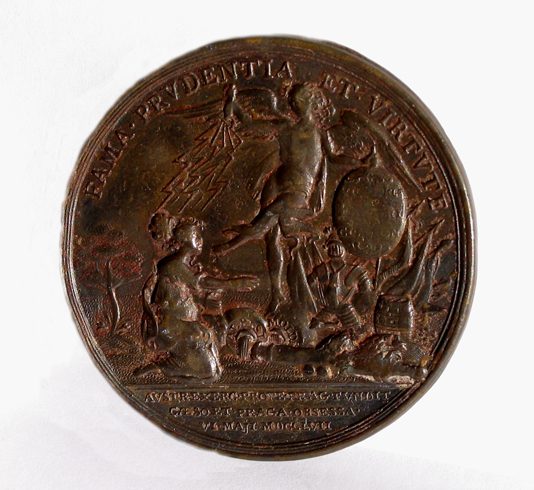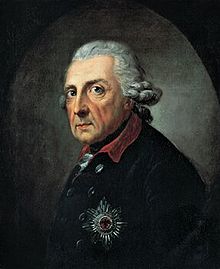JOHN MARTIN
K.L.
(1789-1854)
John Martin Medal
Norman Watson Medal
In 2004 Mr Norman Watson of Aylsham, Norfolk kindly
gifted to the Community of Haydon Bridge a medal. This
was originally in the collection of his grandfather
John G. Watson. This bronze medal had been presented to
John Martin and the face is so inscribed.
Frederick The Great (II) Commemorative Medal 'The
Battle of Prague' 1757.
Medal diameter is 48 mm. Obverse Legend: FRIDERICVS MAGN. D.G.REX
BORVSS. EL. BRAND. DVX SILES. Reverse: FAMA PRVDENTIA VIRTVTE.
Engraver Holtzhey
In exergue: AVSTIR-EXERC- PROPE-PRAGEVNDIT-CAESOET-PRAGA OBSESSA
VI MAJI MDCCLVII.
Half-length bust right, rev Victory kicks Bohemia, knocking off her
crown, 48mm
Frederick II (the Great) of Prussia (24 January 1712
– 17 August 1786)
It is confirmed that the date on the medal is 1757 and it
shows Frederick II (the Great) of Prussia (24 January
1712 – 17 August 1786). He is remembered as a
brilliant military campaigner. Interested primarily in
music and philosophy and not the arts of war during his
youth, Frederick unsuccessfully attempted to flee from
his authoritarian father, Frederick William I, with
childhood friend Hans Hermann von Katte, whose execution
he was forced to watch after they were captured. Upon
ascending to the Prussian throne, he attacked Austria and
claimed Silesia during the Silesian Wars, winning
military acclaim for himself and Prussia. Near the end of
his life, Frederick physically connected most of his
realm by conquering Polish territories in the First
Partition of Poland.
The medal commemorates Battle of Prague or Battle of
Šteboholy on May 6, 1757 Frederick the Great's
67,000 Prussians forced 60,000 Austrians to retreat, but
having lost 14,300 men, decided he was not strong enough
to attack Prague.
The circumstances of the presentation of this medal to
John Martin are not known. This battle was, of course,
earlier than Martin’s birth. It is thought that it
was probably presented to him between 1830 and 1850 when
he gained so many honours from the European Kings of the
day (Czar Nicholas, the Sardinian Bonapartes, Leopold of
the Belgians and Louis Philippe of France were admirers
around these dates). So, it was probably presented in
acknowledgement of his paintings possibly given to
Frederick William III or Frederick William IV of Prussia.
FW IV was a particular patron of the arts and reigned
from 1840.


